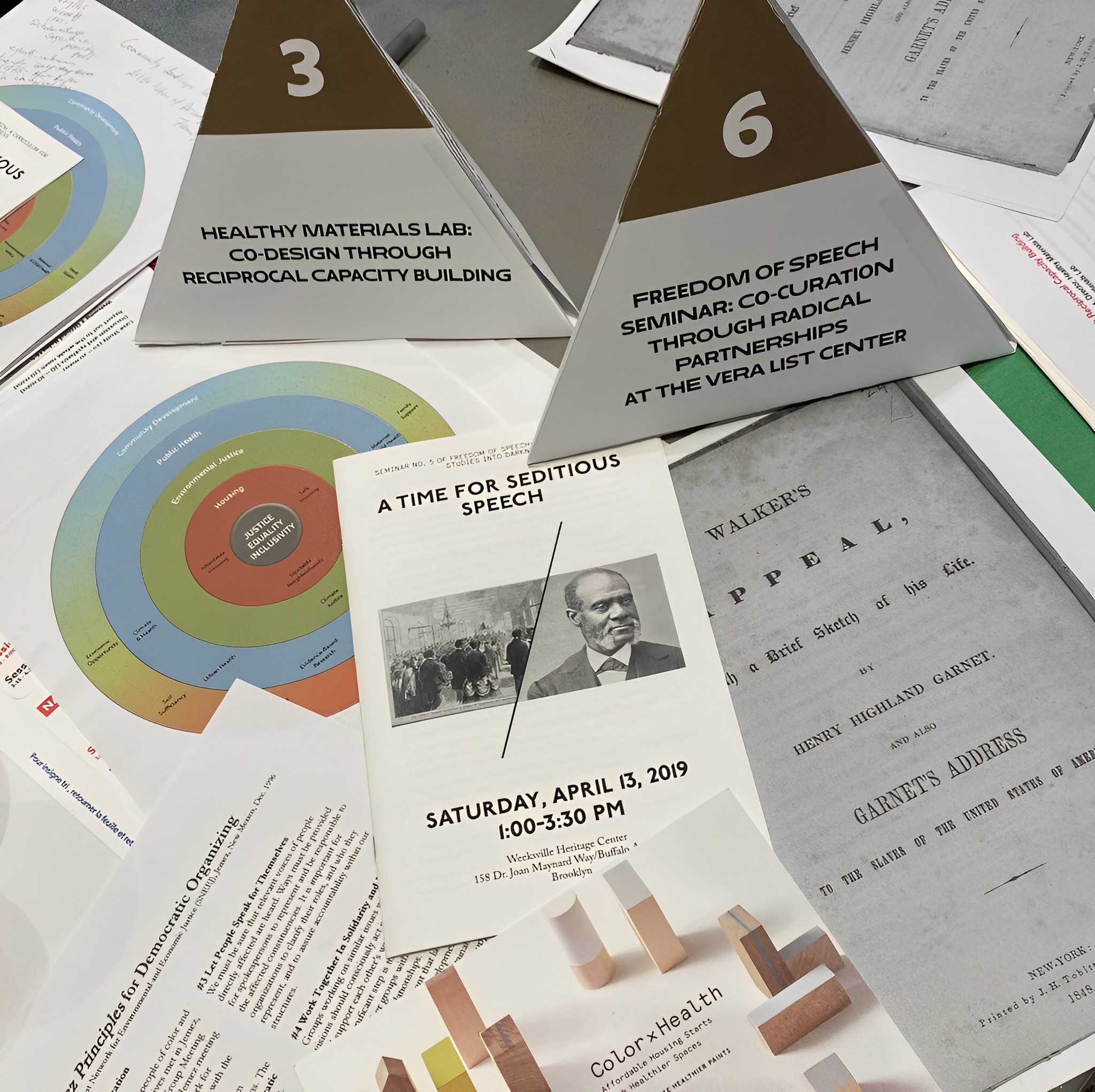Roundtable Session: Healthy Materials Lab: Co-Design Through Reciprocal Capacity Building
Roundtable Session: Freedom of Speech Seminar: Co-Curation Through Radical Partnerships at the Vera List Center
At first glance, one may not think The New School’s Vera List Center for Art and Politics and Parsons’s Healthy Materials Lab have much in common. However, after spending an hour together at Collaboratory Centennial Symposium on Saturday, November 16, 2019, both groups realized they had more in common than one might think.
From sharing ideas on building lasting trust to brainstorming new ways to use the resources available to them as institutes within The New School, both groups have found productive, meaningful ways to collaborate with their respective community partner organizations.
Carin Kuoni, senior director and chief curator at the Vera List Center for Art and Politics, was joined at the roundtable discussion by Obden Mondésir, Oral History Project Manager at Weeksville Heritage Center. Kuoni and Mondésir discussed the process of working together to create the seminar series: “Freedom of Speech: A Curriculum for Studies into Darkness.” The year-long series consisted of six seminars which intersected multiple perspectives from artists, indigenous peoples, feminists, and innumerable others. The series raised important questions about current circumstances and confronted the inequities and uncertainties in our times, especially as they pertain to freedom of speech.
“You have to take the time to actually get to know your collaborators, break bread with them,” said Mondésir, about what worked best for them when it came to collaborating with the Vera List Center. “We’re a grassroots group that does research, so collaborating with the Vera List Center was very natural. In regards to this project and working on this seminar, we were able to use our resources and brought a very important perspective.”
The Vera List Center leveraged its privilege as part of a university to find a meaningful way to support the ideas and research of the Weeksville Heritage Center; the Healthy Materials Lab strives to do the same with its own community partnerships.
Housed within Parsons School of Design, the Healthy Materials Lab is a design research lab dedicated to a world in which people’s health is placed at the center of all design decisions. The team is committed to raising awareness about toxins in building products, and to producing resources for the next generation of designers and architects to create healthier living spaces.
Allison Mears, Director of the Healthy Materials Lab and Associate Professor of Architecture at Parsons, was joined by Burgess Brown, Healthy Materials Lab Engagement Coordinator, to discuss the lab’s work with community partners around the city.
“We know that there’s already a lot of work being done in this space,” Brown said about the efforts to create healthy yet affordable living options throughout New York City. “We make sure to look at who is doing the work already, and then ask: what are the gaps we can fill in? We do our homework ahead of time but still come in with an open mind. We make sure we’re asked to be in the space and make sure what it is we have to offer is useful and relevant.”
One example Mears and Brown provided was their work with Little Sisters of the Assumption Family Health Service (LSA), an organization in East Harlem that strengthens and empowers vulnerable families and children by helping meet their basic needs. Together, Healthy Materials Lab and LSA are finding ways to update the community’s spaces by providing healthier paint options. They explained that instead of jumping into East Harlem and taking over, they have collaborated with LSA to find better ways to assist the community.
Ultimately, both the Vera List Center and the Healthy Materials Lab found that a collaboration with community partners that is mindful, equitable, and respectful is the key to success, as they continue to expand their reach throughout New York City and beyond.
This article was written by Kelly McHugh-Stewart.

